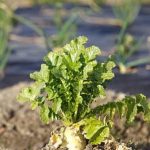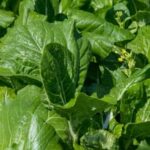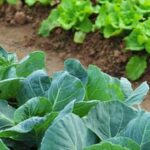Rooftop rainwater harvesting has gained popularity as a sustainable method for watering vegetable gardens. This section will explore the safety of using harvested rooftop rainwater for vegetable gardens, addressing potential risks and concerns, understanding best practices, and steps to ensure its safety.
Is harvest rooftop rainwater safe for vegetable gardens? As more people turn to sustainable gardening practices, the question of using rooftop rainwater for watering vegetable gardens has emerged. In this article, we will delve into the safety considerations of utilizing harvested rooftop rainwater for vegetable gardens and explore the potential benefits and risks associated with this practice.
Harvesting rooftop rainwater for vegetable gardens offers numerous benefits, including cost savings on water bills and reducing reliance on traditional water sources. However, there are also potential risks and concerns that need to be addressed. Understanding the safety of using rooftop rainwater for vegetable gardens is crucial in ensuring that it does not pose any harm to the crops or the individuals consuming them.
Benefits of Using Rooftop Rainwater for Vegetable Gardens
Rooftop rainwater harvesting has become increasingly popular among urban gardeners looking to cultivate healthy and sustainable vegetable gardens. There are several benefits to utilizing rooftop rainwater for this purpose, including:
1. Sustainability: Using rooftop rainwater for vegetable gardens reduces reliance on municipal water sources, which can be costly and may contain added chemicals such as chlorine or fluoride. By collecting rainwater, gardeners can decrease their environmental impact and contribute to a more sustainable water supply.
2. Natural nutrients: Rainwater is free of additives and naturally rich in nutrients that benefit plant growth. When used to irrigate vegetable gardens, rooftop rainwater provides plants with essential minerals and helps maintain soil fertility.
3. Cost-effectiveness: Harvesting rooftop rainwater can lead to significant cost savings over time, especially for gardeners who rely on irrigation systems or regularly water their plants. By incorporating rainwater into their gardening practices, individuals can reduce their utility expenses and enjoy a more economical approach to maintaining their vegetable gardens.
Incorporating rooftop rainwater into vegetable garden maintenance practices is an environmentally friendly choice that offers numerous advantages over traditional watering methods. However, it is important for gardeners to also be mindful of potential risks and concerns associated with using rooftop rainwater for this purpose.
Potential Risks and Concerns of Using Rooftop Rainwater for Vegetable Gardens
Introduction
While rooftop rainwater harvesting can be an excellent way to provide a sustainable water source for vegetable gardens, there are potential risks and concerns that gardeners should be aware of. One of the main concerns is the safety of using rooftop rainwater for watering edible plants.
Contaminants
One of the primary concerns is the presence of contaminants in rooftop rainwater. Rooftops can accumulate various pollutants such as bird droppings, dust, chemicals from roofing materials, and air pollution. When rainwater runs off the roof and into the collection system, it may carry these contaminants along with it. If not properly filtered and treated, these contaminants can pose a risk to both the plants and those who consume them.
Bacterial Growth
Another concern is the potential for bacterial growth in collected rainwater. Standing water in collection barrels or tanks can become a breeding ground for bacteria if not properly maintained. This could lead to contamination of the water and subsequently affect the safety of using it for watering vegetable gardens.
To address these potential risks and concerns, there are several steps that can be taken to ensure the safety of rooftop rainwater for vegetable gardens.
- Proper Filtration: Implementing a filtration system to remove larger particles and debris from collected rainwater can help mitigate potential contaminants.
- Water Testing: Regularly testing the quality of harvested rainwater for harmful bacteria and pollutants is crucial in ensuring its safety for vegetable gardens.
- Maintenance: Proper maintenance of collection systems, including regular cleaning and disinfection, can help prevent bacterial growth and contamination.
By taking these precautionary measures, gardeners can minimize potential risks associated with using rooftop rainwater for their vegetable gardens and reap its many benefits safely.
Understanding the Safety of Rooftop Rainwater for Vegetable Gardens
Rooftop rainwater harvesting has gained popularity as an eco-friendly and cost-effective way to water vegetable gardens. However, many gardeners have concerns about the safety of using rooftop rainwater for their produce. So, is harvest rooftop rainwater safe for vegetable gardens?
When considering the safety of rooftop rainwater for vegetable gardens, it is essential to understand the potential risks and concerns associated with this practice. One primary concern is the accumulation of contaminants such as bird droppings, pollutants, and debris on the roof, which can be washed into the rainwater collection system. These contaminants may pose a threat to the health of both plants and consumers if not properly managed.
In addition to external contaminants, there is also concern about the internal buildup of bacteria or algae within the rainwater storage tank. If not adequately maintained and treated, these microorganisms can potentially contaminate the harvested rainwater. Therefore, it is crucial for gardeners to understand the factors that contribute to the safety of rooftop rainwater for their vegetable gardens and take proactive measures to ensure its purity.
Factors to Consider When Using Rooftop Rainwater for Vegetable Gardens
When considering the use of rooftop rainwater for vegetable gardens, there are several important factors to take into account in order to ensure the safety of the water supply. From the type of roof material to potential contaminants, being aware of these factors is crucial for maintaining healthy and safe vegetable gardens.
Type of Roof Material
The type of material used for your rooftop can significantly impact the quality and safety of harvested rainwater. For example, roofs made of asphalt shingles may leach chemicals into the water, while metal or tile roofs are generally considered safer options. It is important to understand the composition of your roof and its potential impact on rainwater quality before using it for your vegetable garden.
Potential Contaminants
Another key factor to consider is the presence of potential contaminants in rooftop rainwater. Airborne pollutants, bird droppings, and debris can all contribute to contamination. Additionally, if your roof has been treated with chemicals for pest control or maintenance, these substances could end up in the collected rainwater. Assessing and addressing these potential contaminants is vital for ensuring that rooftop rainwater is safe for your vegetable garden.
Water Treatment and Filtration
Implementing appropriate water treatment and filtration systems can help mitigate any potential risks associated with rooftop rainwater harvesting. Utilizing methods such as UV sterilization, carbon filtration, or chlorination can effectively remove harmful microorganisms and pollutants from the harvested water. Investing in proper filtration technology is an essential consideration when using rooftop rainwater for vegetable gardens.
By carefully considering these factors and taking proactive measures to address any potential concerns, it is possible to safely use rooftop rainwater for vegetable gardens while reaping the environmental and cost-saving benefits it provides.
Best Practices for Using Rooftop Rainwater for Vegetable Gardens
Using rooftop rainwater for your vegetable garden can be a great way to conserve water and reduce your environmental impact. However, it is important to follow best practices to ensure that the harvested rainwater is safe for your vegetables.
One of the most important factors to consider is the cleanliness of your rooftop and gutters. It’s essential to keep these areas free from debris, leaves, and other contaminants that could make their way into your rainwater collection system. Regular cleaning and maintenance of your rooftop and gutters will help ensure that the harvested rainwater is clean and safe for use in your vegetable garden.
Another best practice is to use a first flush diverter in your rainwater harvesting system. This device helps divert the initial runoff from your roof, which may contain more pollutants, away from your rainwater storage tank. By diverting this initial runoff, you can improve the overall quality of the harvested rainwater.
It’s also important to properly filter and treat the collected rainwater before using it on your vegetable garden. Installing a filtration system and using appropriate treatments, such as chlorine or UV light, can help remove any remaining contaminants and ensure that the harvested rainwater is safe for use on your vegetables.
Overall, by following best practices such as keeping your rooftop clean, using a first flush diverter, and properly filtering and treating the collected rainwater, you can maximize the safety of using rooftop rainwater for your vegetable garden.
| Best Practices | Importance |
|---|---|
| Clean Rooftop and Gutters | Ensures harvested rainwater is free from debris and contaminants |
| First Flush Diverter | Diverts initial polluted runoff away from storage tank |
| Proper Filtration and Treatment | Removes remaining contaminants for safe use on vegetables |
Steps to Ensure the Safety of Rooftop Rainwater for Vegetable Gardens
Roof rainwater harvesting involves collecting rainwater from rooftops and using it for various purposes, including watering vegetable gardens. However, the question that is often raised is whether rooftop rainwater is safe for vegetable gardens. Steps can be taken to ensure the safety of rooftop rainwater used for this purpose.
Before using rooftop rainwater for vegetable gardens, it is important to test the water for any potential contaminants. This can be done through water testing kits or by sending samples to a laboratory. Testing will provide valuable information about the quality of the rainwater and whether it is safe for use on edible plants.
Additionally, ensuring that the rooftop and gutters are clean is essential in maintaining the safety of harvested rainwater. Regular cleaning prevents the buildup of debris, bacteria, and other contaminants which could affect the quality of the water. Proper filtration systems can also help remove impurities from the collected rainwater before it is used in vegetable gardens.
It’s worth noting that while rooftop rainwater can be safe for vegetable gardens when proper precautions are taken, factors such as air pollution and chemical treatments on roofing materials can impact its safety. Therefore, careful consideration should be given to these potential risks when utilizing harvested rainwater for growing vegetables.
| Steps to Ensure Safety | Importance |
|---|---|
| Water testing | Identify potential contaminants |
| Routine cleaning | Prevent buildup of impurities |
| Filtration systems | Remove impurities before use |
Case Studies and Success Stories of Using Rooftop Rainwater for Vegetable Gardens
As the popularity of rooftop rainwater harvesting for vegetable gardens continues to grow, it is important to look at successful case studies and hear about the positive experiences of those who have implemented this practice. Here are some examples of how rooftop rainwater has been effectively used in vegetable gardens:
- In a community garden in urban New York City, volunteers installed a rooftop rainwater harvesting system to supplement the water needs of their vegetable plots. By collecting rainwater from the rooftop of a nearby building, they were able to reduce their reliance on city water sources and decrease their overall water usage.
- A family in suburban California decided to install a rain barrel collection system on their home’s rooftop to water their backyard vegetable garden. The abundance of rainfall in the region allowed them to collect enough water during the rainy season to sustain their garden throughout the drier months, resulting in healthier and more bountiful crops.
- An organic farm in rural Oregon integrated a large-scale rooftop rainwater harvesting system into their operations, utilizing the collected rainwater for irrigation across acres of vegetable fields. This reduced their dependency on well water and provided a sustainable water source that aligned with their environmental values.
These case studies demonstrate how successful rooftop rainwater harvesting can be when implemented properly. By following best practices and taking steps to ensure safety, it is possible to use harvested rooftop rainwater to effectively support vegetable gardens.
Factors such as regular maintenance of collection systems, proper filtration, and appropriate usage can contribute significantly to the safety and efficacy of harvested rooftop rainwater for vegetable gardens. When considering implementing such systems, it is essential to take into account these factors in order to ensure the success and safety of this practice.
Conclusion
In conclusion, the safety of using rooftop rainwater for vegetable gardens is a topic that requires careful consideration and attention to certain factors. While there are undeniable benefits to harvesting rainwater from rooftops for gardening purposes, there are also potential risks and concerns that need to be addressed. It is important for gardeners to understand the safety of rooftop rainwater and take necessary steps to ensure its suitability for use in vegetable gardens.
Factors such as roof material, contaminants, and proper filtration can all affect the quality of harvested rainwater. Understanding these factors and implementing best practices can help mitigate any potential risks associated with rooftop rainwater. Additionally, conducting regular water testing can provide valuable insight into the safety of the harvested rainwater and whether it is suitable for use in vegetable gardens.
It is clear that while rooftop rainwater can be a valuable resource for vegetable gardens, it is imperative for gardeners to take appropriate steps to ensure its safety. By understanding the potential risks, considering important factors, and implementing best practices, gardeners can confidently utilize rooftop rainwater for their vegetable gardens while safeguarding the health of their crops and ultimately their own well-being.
Frequently Asked Questions
Is It Safe to Use Rainwater From Roof for Vegetable Garden?
Using rainwater from the roof for a vegetable garden can be safe as long as certain precautions are taken. It’s important to use a well-maintained, clean water collection system and to avoid using water that has been contaminated with chemicals or pollutants.
Is Rain Water Collected From Roof Safe?
Rainwater collected from the roof can be safe for various uses, including watering plants and gardens. However, it’s crucial to have a proper filtration system in place to remove any impurities or contaminants that may have accumulated on the roof.
Is Rain Water Safe for Gardens?
Rainwater is generally safe for gardens, but it’s essential to ensure the water is free from any harmful substances. Using a filtration system and keeping the collection area clean can help maintain the quality of rainwater for garden use.

If you’re looking to get into vegetable gardening, or are just looking for some tips on how to make your current garden better, then you’ve come to the right place! My name is Ethel and I have been gardening for years. In this blog, I’m going to share with you some of my best tips on how to create a successful vegetable garden.





